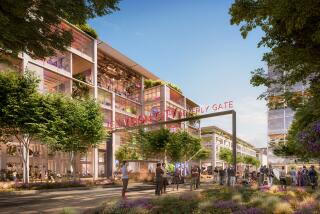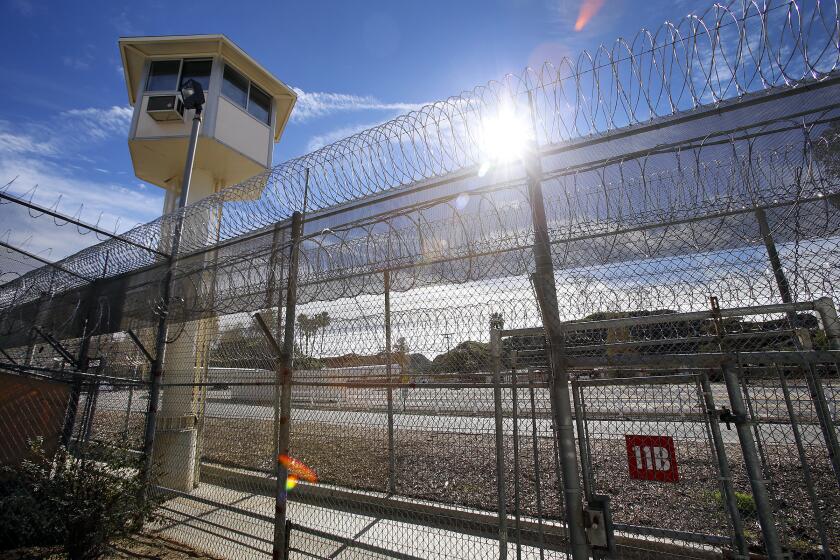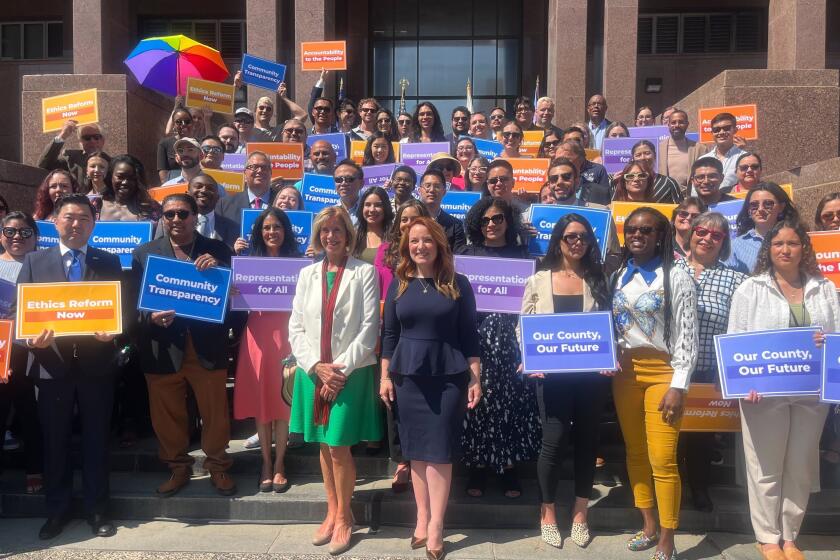6 Developers to Fight Vista’s Proposition B
- Share via
With an election battle over growth in Vista just a week away, a group of six developers with projects in the city has organized to fight the slow-growth measure on the ballot.
Leaders of the organization, dubbed Building a Better Vista, announced the group’s opposition to the initiative, Proposition B, during a press conference Monday.
But a spokesman said the group could not come to a consensus on Proposition A, the council-backed measure pitted against Proposition B in next Tuesday’s election, and would neither support nor oppose it.
While Proposition B calls for an annual cap on the number of dwelling units built in the city, the council’s measure is designed to ensure that needed public facilities keep pace with growth.
Supporters of Proposition B, which was sponsored by the grass-roots organization Vistans for Honest Government, said they were not surprised that the developers have surfaced to battle their initiative.
“It’s expected,” said Jeff Baker, a former Vista planning commissioner and author of the slow-growth initiative. “Their motive is simply to profit with minimal control. You can call it greed, you can call it anything else. The bottom line is they want political control of our town.”
Dale Kennedy, a spokesman for Building a Better Vista, said the group considers Proposition B to be a “bad law” that would reduce developer fee revenue and subsequently cut into the city’s ability to provide needed services such as roads and parks.
“Proposition B will not raise enough development fees to help us have a quality community,” Kennedy said. “It is simply bad for Vista.”
He cited the city attorney’s impartial analysis of Proposition B, which predicted that the initiative could reduce development fees by 55%. During the last four years, that sort of reduction would have cost the city about $3.8 million annually in lost revenue.
In addition, Kennedy stressed, Proposition B “lacks accountability” because the Planning Commission, an appointed board, would be given expanded powers to select what projects are built under the annual quota.
Kennedy said the group, composed mostly of development firms based in San Diego, has put up several campaign placards around Vista, conducted a telephone poll of residents and sent out an informational mailer.
So far, the organization has not filed a campaign disclosure statement outlining how much money it has raised and spent. Kennedy could provide no clues as to how large a campaign war chest the organization has amassed other than to say “it’s not a big number.”
While developers have banded together in other North County cities to wage well-organized, high-priced campaigns against slow-growth measures, the Vista group is something of an 11th-hour entrant into the political fray.
“I guess better late than never,” Kennedy said. “We’re trying to respond.”
Although developers in other cities have challenged victorious slow-growth measures in court, Kennedy declined to speculate on whether his group will file a lawsuit if Proposition B prevails.
The council’s ballot measure, Proposition A, requires a vote of the people to increase densities, prohibits development without provision for needed public facilities and mandates adoption of a plan outlining what facilities are needed.
It would limit construction to 500 units a year through 1999, but allows a broad exemption: Developers of projects that have a so-called “specific plan,” which outlines public facilities that will be provided, could proceed unimpeded by the annual cap.
The citizen-initiated Proposition B would limit construction of new homes to 569 annually beginning this year and extending through 1999. It also calls for the Planning Commission to evaluate each development in terms of public facilities provided, architectural strengths and the inclusion of parks or open space.
Among the projects that would be exempted from the annual cap would be remodeling work on existing homes, construction of single-family homes on a single lot, and housing for senior citizens or low-income residents.
More to Read
Sign up for Essential California
The most important California stories and recommendations in your inbox every morning.
You may occasionally receive promotional content from the Los Angeles Times.













